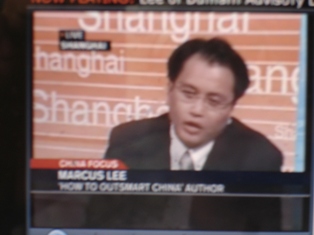
美国彭博社(Bloomberg)访问李统毅博士
访问视频: http://www.bloomberg.com/apps/news?pid=newsarchive&sid=ayISWz8JuPlE
美国彭博社官方网站: http://www.bloomberg.com |
2008年1月2日, 上海
新劳动法修改后美国彭博社(Bloomberg)访问李统毅博士。中国经济发展前景可否持续?全球经济走势,人口增长等问题。
部分访问原文:
Macroeconomic of China
Population surplus push up asset pricing
- Birth rate caused changes in population structure. Baby boomer reaches its peak in 1950-1970 and its low in from 1995 onwards. From 2015 -2030, this will be the retirement period for 1st generation of baby boomer in 1950-70. From 1980-2015, this is the 1st generation working period. They will keep buying. Things will look different from 2015 onwards.
- Japan Case Study: Population structure has positive correlation with asset pricing. When City land price and Japan 225 Index over saving growth, stock market and property market was crash in 1990. This is a lesson we shall learn.
- From 2000-present, we see high growth in consumer spending: washing machine, tv, air-conditioning, computer, automobile.
- From 1995-2005, we see increase in Export especially in more appliances.
- According to survery from 1950-2050, by UN, China baby bomber and “Golden Age” in around 2000-2010, Chinese saving rate will reaches its peak between 2010-2015 and will slow down and decrease during the 1st phrase retirement of baby boomer.
- With this surplus, currency and investment shall raise.
Global Economic Slowdown
- According to OECD leading indicator, global economy is slowing down. Some zones are deeping into negative areas like Japan and Eurozone.
- USD Read Effective Exchange Rate (REER) have around 15%b more for depreciation. According to 2007 Q3 2.5% speed of depreciation, USD depreciation can as as far as early 2009 (another 6.5 Q to go)
- US inflation rate close to its major trading partner (ref: 2007, Sept CPI) so its REER close to its Norminal Effect Exchange rate (NEER)
- China Export & US Consumer spending is closely correlated. As of 2004-2007 almost at par on YoY% growth.
- Industries most rely on export in china are: Electronic appliances 65%, Office appliance 50%, Fur production 47%, Furniture 46%, Fashion & apparel 44%, robber 26% etc.
- Industries most rely on export to US are: 1) Furniture 34%, Electronic appliance 22%, Office applaiance 17%, Fashion & apprel 14%, rubber 9%, metal 8%, wood 6%.
部分中文翻译:
中国宏观经济
人口增长过剩推动资产定价
1)出生率导致人口结构的变化。婴儿潮从1995年起达到高峰,并在1950年至1970年低英寸从2015年-2030,这将是在1950年至70年第一的婴儿潮一代的退休期。从1980年至2015年,这是第一代的工作时间。他们将继续购买。事情也将会有所不同从2015年开始。
2)日本为例:人口结构与资产定价的正相关关系。当城市地价和日本的储蓄增长超过225指数,股市和房地产市场是在1990年崩溃。这是一个教训,我们要学。
3)从2000年至今,我们看到消费支出:洗衣机,电视机,空调,电脑,汽车的高增长。
4)从1995-2005年,我们看到更多的设备,特别是在出口的增加。
5)根据survery由联合国从1950-2050年,中国婴儿轰炸机和“黄金时代”,在2000-2010年左右,中国储蓄率将达到其2010-2015年之间的高峰期,将会放缓,减少在第一短语退休婴儿潮。
6)在这个盈余),货币和投资,应当提高。
全球经济放缓
1)根据经合组织的领先指标,全球经济正在放缓。有些区是迪平到日本和欧元区的消极方面。
2)美元阅读有效汇率(实际有效汇率)大约有15%B级折旧更多。据2007年第三季度2.5%的折旧速度,美元贬值会尽量为2009年初(另外650 Q到去)
3)美国的通货膨胀率接近其主要贸易伙伴(参考:2007年9月消费物价指数),所以它的实际有效汇率接近其公称对汇率(名义有效汇率)
4)中国出口与美国消费支出密切相关。作为2004-2007年几乎面值%的同比增长。
5)大部分行业依靠中国出口是:电子电器65%,办公设备50%,毛皮总产量的47%,家具46%,时装及服装44%,26%等强盗
6)大部分行业的出口依赖美国是:1)家具34%,22%的电子设备,办公17%,时装14%,橡胶9%,8%,金属,木材6%。
|